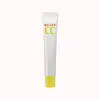What's inside
What's inside
 Key Ingredients
Key Ingredients

 Benefits
Benefits

 Concerns
Concerns

 Ingredients Side-by-side
Ingredients Side-by-side

Ascorbyl Glucoside
AntioxidantTocopheryl Acetate
AntioxidantDipotassium Glycyrrhizate
HumectantO-Cymen-5-Ol
AntimicrobialSalicylic Acid
MaskingCajanus Cajan Leaf Extract
Skin ConditioningOenothera Biennis Flower Extract
AstringentSimmondsia Chinensis Seed Oil
EmollientLactic Acid
BufferingHydrolyzed Roe Extract
HumectantRosa Rubiginosa Seed Oil
EmollientDisodium EDTA
Hydroxypropyl Methylcellulose
Emulsion StabilisingCarbomer
Emulsion StabilisingPotassium Hydroxide
BufferingCetearyl Alcohol
EmollientHydrogenated Castor Oil
EmollientGlyceryl Stearate
EmollientPentylene Glycol
Skin ConditioningGlycerin
HumectantParaffinum Liquidum
EmollientTriethylhexanoin
MaskingCaprylic Acid
CleansingButylene Glycol
HumectantAscorbyl Glucoside, Tocopheryl Acetate, Dipotassium Glycyrrhizate, O-Cymen-5-Ol, Salicylic Acid, Cajanus Cajan Leaf Extract, Oenothera Biennis Flower Extract, Simmondsia Chinensis Seed Oil, Lactic Acid, Hydrolyzed Roe Extract, Rosa Rubiginosa Seed Oil, Disodium EDTA, Hydroxypropyl Methylcellulose, Carbomer, Potassium Hydroxide, Cetearyl Alcohol, Hydrogenated Castor Oil, Glyceryl Stearate, Pentylene Glycol, Glycerin, Paraffinum Liquidum, Triethylhexanoin, Caprylic Acid, Butylene Glycol
 Reviews
Reviews

Ingredients Explained
These ingredients are found in both products.
Ingredients higher up in an ingredient list are typically present in a larger amount.
Butylene Glycol (or BG) is used within cosmetic products for a few different reasons:
Overall, Butylene Glycol is a safe and well-rounded ingredient that works well with other ingredients.
Though this ingredient works well with most skin types, some people with sensitive skin may experience a reaction such as allergic rashes, closed comedones, or itchiness.
Learn more about Butylene GlycolDipotassium Glycyrrhizate comes from licorice root.
Extracts of licorice have demonstrated to have antibacterial, anti‐inflammatory, antiviral, antioxidant properties.
One component, glabridin, has extra potent antioxidant and soothing properties. It has also been found to block pigmentation from UVB rays in guinea pigs.
Licorice Root also contains a flavonoid. Flavonoids are a natural substance from in plants. Flavonoids also have antioxidant properties.
Another component, glycyrrhizin, has been found to have anti-inflammatory and antimicrobial benefits. This may make licorice root extract effective at treating acne. However, more research is needed to support this.
Liquiritin is one of the flavone compounds found in licorice. It has been found to help lighten skin by preventing tyrosinase from reacting with tyrosine. When the two react, protein is converted to melanin. Melanin is the substance in your body that gives your features pigmentation.
Licorice root is native to Southern Europe and Asia. It has been used in traditional Chinese medicine to help with respiratory issues.
Learn more about Dipotassium GlycyrrhizateThis ingredient is more commonly known as IPMP or Isopropyl Methylphenol. It is a preservative and has antimicrobial properties.
According to the EPA, this ingredient is allowed for use in cleansers, creams, powders, bath products, toothpaste, perfume, and more.
Tocopheryl Acetate is AKA Vitamin E. It is an antioxidant and protects your skin from free radicals. Free radicals damage the skin by breaking down collagen.
One study found using Tocopheryl Acetate with Vitamin C decreased the number of sunburned cells.
Tocopheryl Acetate is commonly found in both skincare and dietary supplements.
Learn more about Tocopheryl Acetate